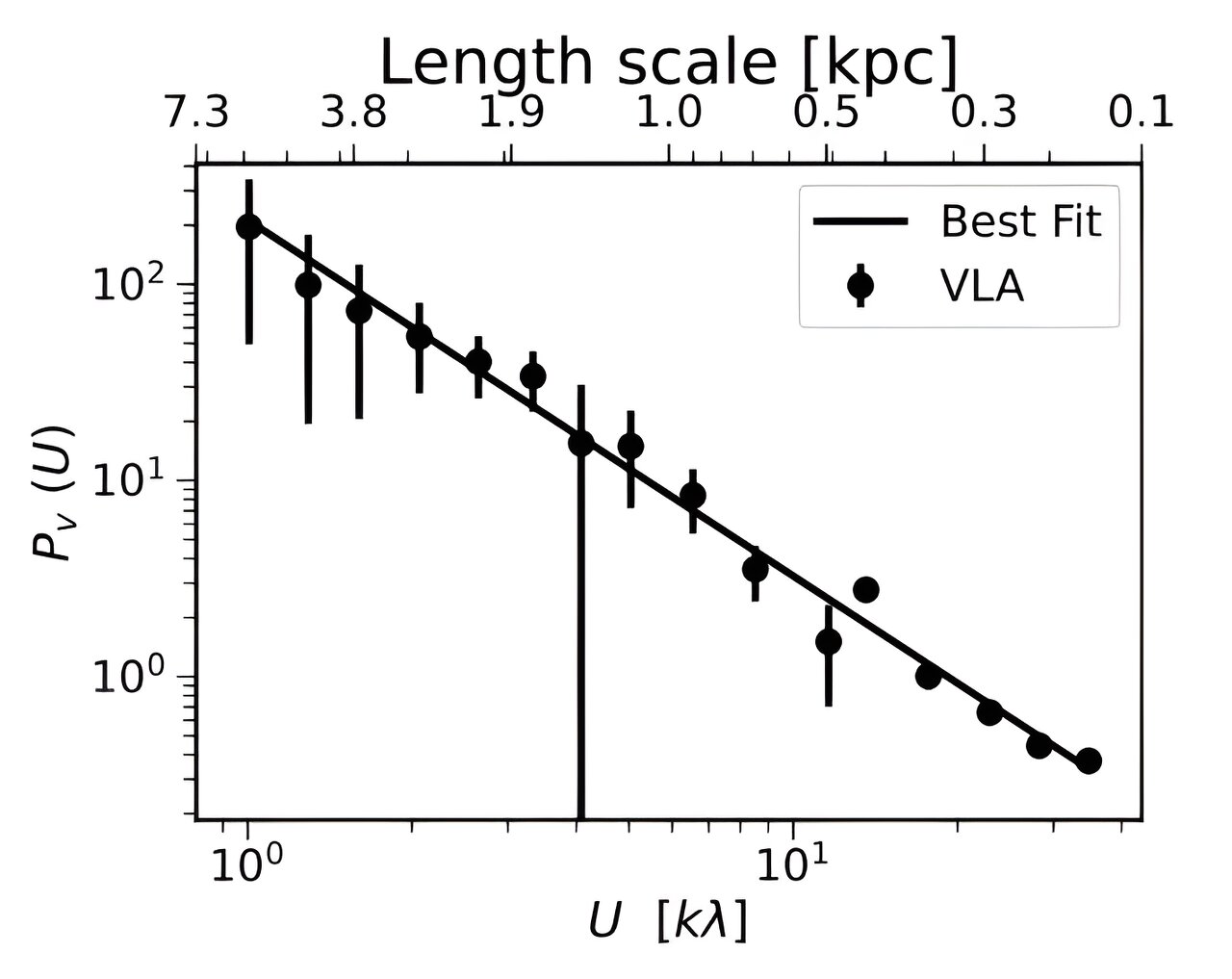Indian astronomers have conducted a study aimed at investigating a large-scale turbulence in the interstellar medium of a spiral galaxy known as NGC 6946. Results of the study, published October 4 on the pre-print server arXiv, could help us better understand the nature of this phenomenon.
Observations show that the interstellar medium (ISM) is turbulent on scales up to thousands of light years. This turbulence plays an important role in several processes such as the formation of stars, the stability of molecular clouds, and the re-acceleration and diffusion of cosmic rays. However, although many studies of turbulence in ISM have been conducted, its generation mechanism still baffles scientists.
NGC 6946 is a bright late-type spiral galaxy located some 19.2 million light years away. It has an optical radius of around 32,000 light years, dynamical mass of about 730 billion solar masses and a star-formation rate at a level of 2.5 solar masses per year. Previous observations of NGC 6946 have identified the presence of a turbulence cascade in the disk of this galaxy.
Now, Meera Nandakumar and Prasun Dutta of the Indian Institute of Technology (BHU) Varanasi, decided to take a closer look at the turbulence in NGC 6946, by analyzing the data from the Karl G. Jansky Very Large Array (VLA) and The HI Nearby Galaxy Survey (THINGS). They used the visibility moment estimator (VME) to measure the neutral atomic hydrogen (HI) column density and line of sight turbulent velocity power spectrum from VLA and THINGS.
The results point to the existence of a large-scale energy cascade in the disk of NGC 6946. The study found that the density power spectrum of this galaxy has a slope of -1.81 and the column density slope was measured to be -0.96. According to the authors of the paper, these findings suggest that the turbulence-driving mechanism for NGC 6946 comes from a combination of compressive and solenoidal forcing.
2023-10-12 08:24:03
Original from phys.org rnrn
